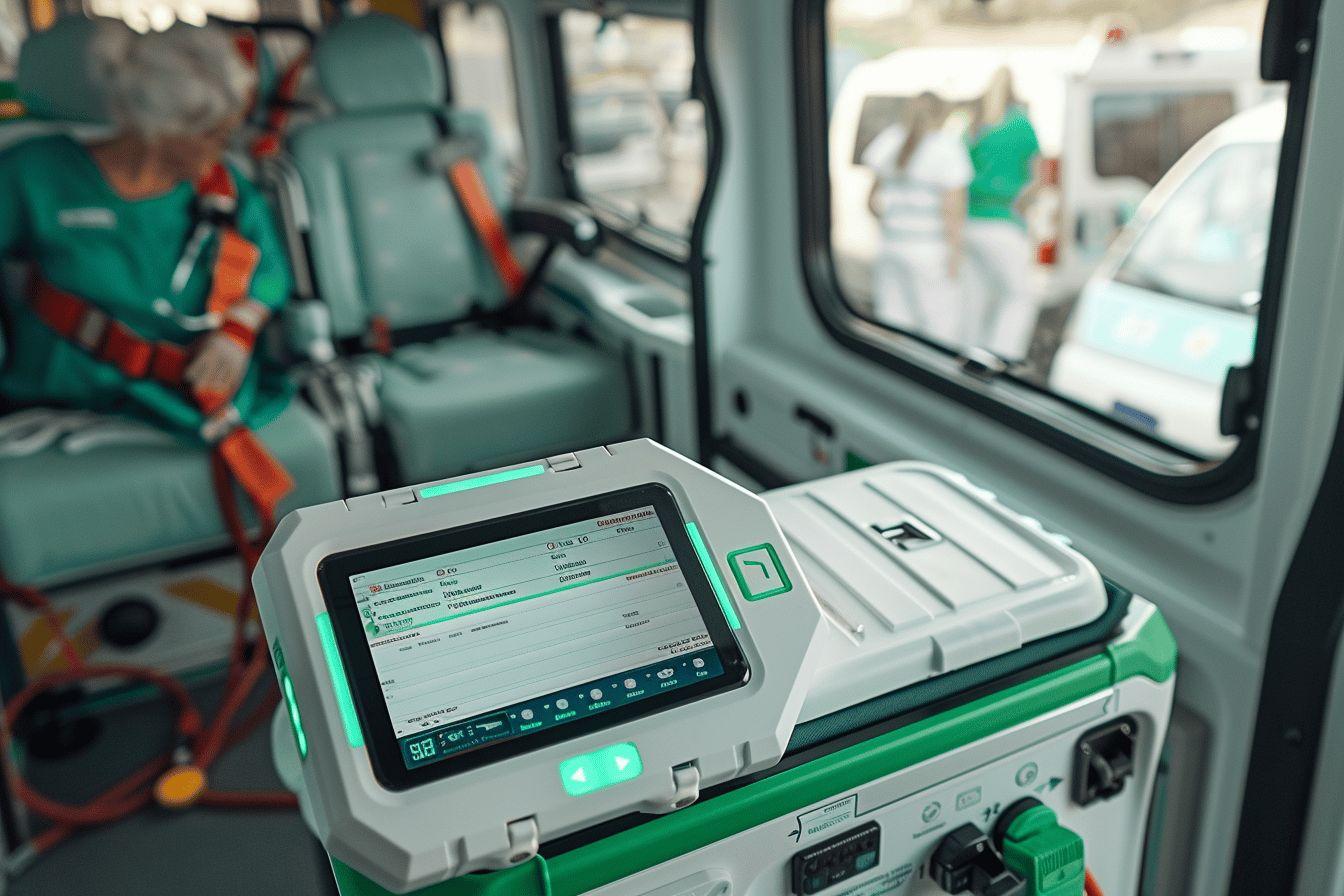The Nomadeec platform is transforming the way medical emergencies are handled, thanks to its dematerialized check-up solution. This technological innovation, developed by French start-up Exelus, is part of the wider telehealth and telemedicine movement. Let’s take a look at how Nomadeec is transforming the work of emergency services and SDISs, while exploring the current challenges of telemedicine.
A mobile platform for first-aid services
Nomadeec is positioned as a cutting-edge solution for emergency telemedicine. This mobile platform, compatible with various devices (smartphones, tablets, PCs) and operating systems (Android, iOS, Windows), offers healthcare professionals a high-performance tool for optimizing their interventions.
Nomadeec features include:
- Recording and transmission of information to the emergency services
- Compatibility with various medical devices (thermometer, stethoscope, blood pressure monitor, ECG)
- Augmented reality integration via the Microsoft HoloLens headset
- The ability to send photos and live video streams
This innovative platform enables first-aiders, paramedics and firefighters to intervene effectively while keeping their hands free thanks to voice and gesture commands. The aim is clear: to improve the efficiency of pre-hospital care by facilitating communication between field staff and emergency physicians.
Telehealth at the heart of medical innovation
Nomadeec’s development is part of a wider boom in telehealth, a field that has seen a significant acceleration in the wake of the COVID-19 crisis. Telehealth encompasses a variety of remote medical practices, governed in France by a legal framework defining five main types of act.
Here’s an overview of the different components of telehealth:
| Type of procedure | Description |
|---|---|
| Teleconsultation | Remote medical consultation |
| Tele-expertise | Remote medical advice between healthcare professionals |
| Teleassistance | Remote assistance from one healthcare professional to another |
| Telecare | Remote care by paramedical professionals |
| Teleregulation | Remote medical regulation (SAMU) |
These practices are designed to improve access to care, particularly in areas with a low supply of healthcare professionals, and to facilitate the monitoring of chronic diseases. The growth of telehealth also raises major issues in terms of theinteroperability of healthcare information systems, a challenge that platforms such as Nomadeec are striving to meet.

Nomadeec: a vision of the future for medical emergencies
Nomadeec’s creator, startup Exelus, presented its solution as a “world first” in the use of augmented reality for first aid. This innovation attracted a great deal of interest during demonstrations at CES, the famous Las Vegas technology show, testifying to its revolutionary potential.
Nomadeec’s ambitions are not limited to the French market. The platform is aiming for international expansion, capitalizing on its technological lead and experience in the field of emergency telemedicine. This strategy is part of a global trend towards the adoption of connected healthcare technologies.
Nomadeec’s impact on emergency care could be considerable:
- Reduced response times thanks to optimized communication
- Improved quality of pre-hospital care
- Optimization of medical resources by facilitating remote triage
- Reduced responder stress thanks to real-time expert support
These advances could help save more lives and significantly improve the efficiency of emergency services and SDIS.
The future of telehealth and dematerialized assessments
Nomadeec’s innovation is part of a wider dynamic of digital transformation in the healthcare sector. Dematerialized check-ups and emergency telemedicine are just the tip of an iceberg of innovations that promise to revolutionize medical practice.
Possible future developments include :
- The integration of artificial intelligence to assist diagnosis
- the development of even more powerful and miniaturized medical sensors
- Enhanced augmented and virtual reality technologies for training and medical assistance
- Standardization of medical data exchange protocols for greater interoperability
These technological advances, combined with solutions like Nomadeec, promise to radically transform the way medical emergencies are handled. They pave the way for more responsive, accurate and accessible medicine, for the benefit of patients and healthcare professionals alike.
In short, Nomadeec embodies the future of dematerialized check-ups and emergency telemedicine. By pushing back the boundaries of technology in the service of healthcare, this innovative platform is helping to shape a more efficient and effective healthcare system. The adventure of telehealth has only just begun, and solutions like Nomadeec are sure to spearhead it.


